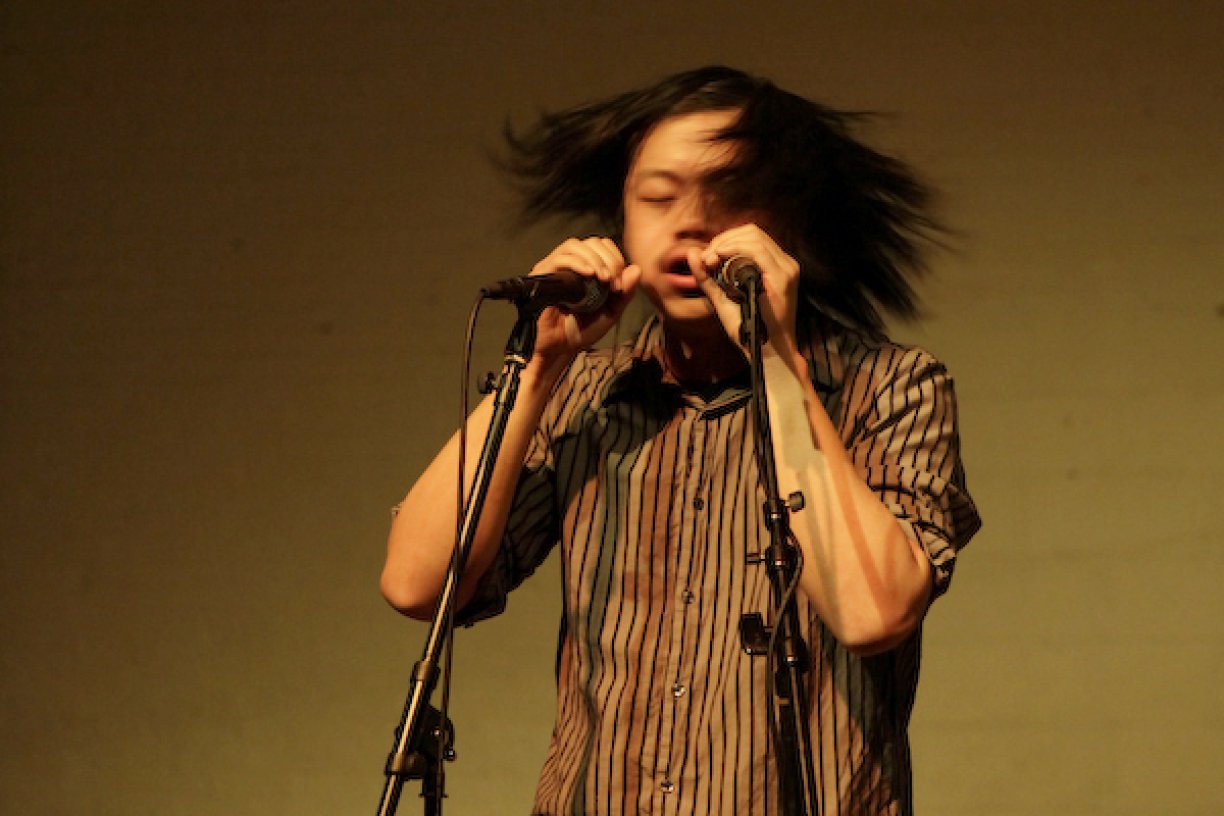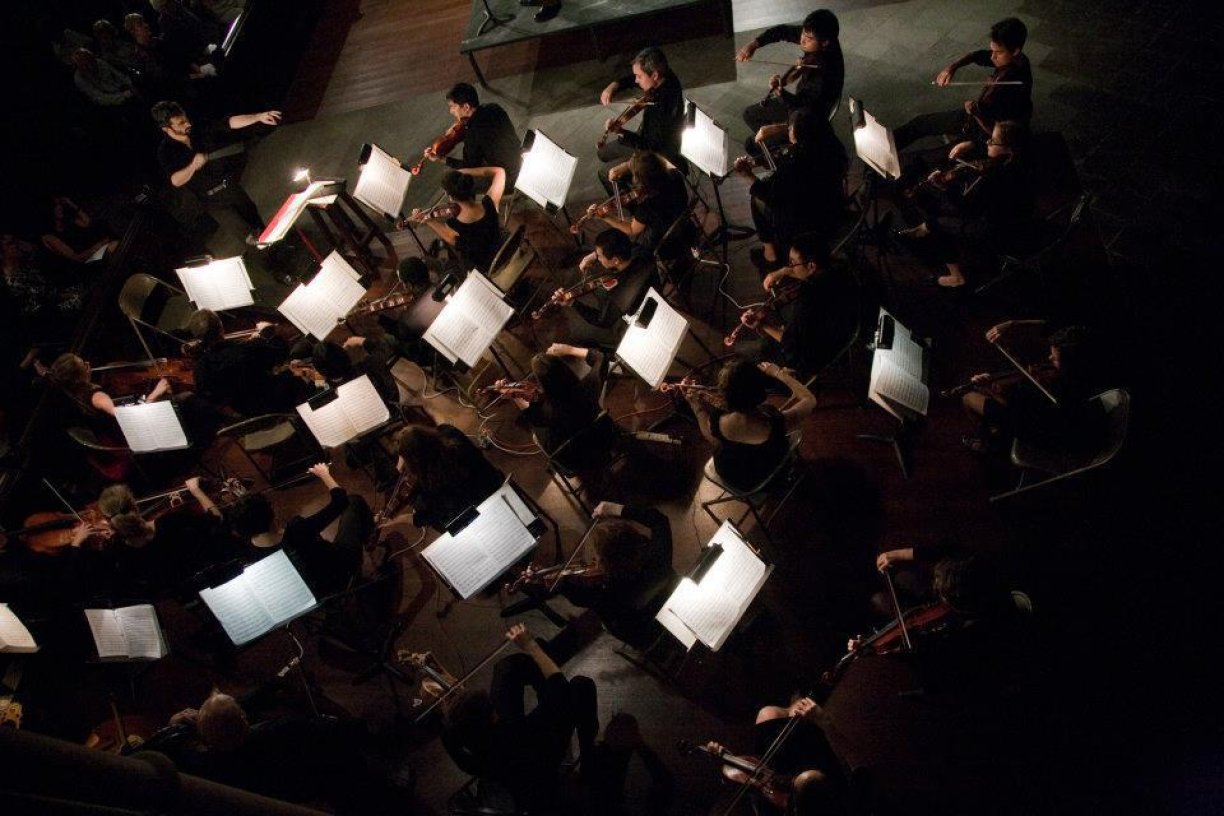String Theories, a joint partnership between ISSUE Project Room and the String Orchestra of Brooklyn, commissions innovative artists to create new works for string orchestra. Premiering on March 17th, 2012, the program features works by Anthony Coleman, MV Carbon, Eric Wubbels, and C. Spencer Yeh. For many of these artists, including Yeh, this is their first opportunity to work on this large a scale. Here Yeh speaks with ISSUE Project Room’s Andrew Smith about the transition from solo and ensemble improvisation to composing for orchestra.
Andrew Smith: Improvisation seems to be at the core of much of your performance – have you translated that to writing for a large ensemble? Are there any other composers whose work you’ve taken cues from, relating to improvisation?
C. Spencer Yeh: I’ve worked some ‘structured improvisations’ into my project Burning Star Core when it involved other band members, but without any micro-level direction of their sounds. I knew the players pretty well, and knew what they could do, so the structured improvisations were definitely shaped with that in mind. I suppose that selecting players is a composition unto itself. There’s so much that’s idiosyncratic to a player, that it’s hard in those cases to try to somehow notate that, though I suppose it’s technically possible. During a large-group improv/noise ensemble’s UK tour, we ended up writing, as a group, the sets for each evening. However, the ‘compositions’ mostly involved putting players together in solos, duos, trios, etc., and seeing what would happen, as well as how we would transition in and out of these moments. I suppose that’s some manner of sound organization. Maybe it’s like a trail mix recipe – you aren’t really going to make pretzels from scratch and then chocolate from scratch and then so on, right? No, you just sort of dump your preferred brand of these things together. Maybe leave the peanuts out for your friend with the nut allergy.
AS: You also have a range of extended string techniques that you’ve developed and use in performance. Do you find yourself translating these techniques onto the page? Have you been able to work directly with the players for a period of time, in order to develop ideas and techniques?
CSY: Not really – I suppose I could, but then we’d have to outfit the String Orchestra of Brooklyn with a bunch of beater instruments. You know, just everything hanging up on the walls of restaurants in Times Square. [ISSUE Project Room curator] Zach Layton had suggested a concerto for myself and the SOB as a possibility, but I’m actually pretty green these days about composing in this manner, so I really wanted to start from the most basic place that I could, and figure out how to pull it off. I would sit at my desk and pretend to play the length of a cello bow, thinking about how long the bow was, or making a bunch of charts I’d constantly reference, about what chords I could get away with. I remember flipping through a book of music my little sister had, for when she was studying reeds, and really digging pieces like “D Day,” where it was just quarter notes of D. Pretty awesome. I am spoiled by some close friends who can take a look at things for me and immediately give me the kind of feedback I need. On one hand, I don’t want to play like I’ve been in this game for so long so I fake a complex composition, but on the other hand, I’m not wearing any insecurity on my sleeve either. I can say I am happy they haven’t laughed at me so far. If [conductor] Eli or anyone else from the SOB hands me a solo noise cassette and asks my thoughts, I’ll be sure to extend the same courtesy.
Back in Cincinnati, a friend had brought me into this project of twelve painters, creating works on these huge 12’x12’ canvases over the course of a month. I don’t know why she asked me, as I wasn’t presenting myself as a painter at the time, but I’m really happy I was asked and had done it. I’m not sure where the painting is now – it’s probably long gone, which is a shame as I sure could use it right about now.
AS: Much of your work is collaborative, which is generally anathema to dropping some notated parts in front of an orchestra. Does the SOB allow some collaborative opportunities?
CSY: Well, actually I wanted to explore that side of just dropping some parts in front of people, and used this opportunity to try that out, while still leaving some aspects of the work in the hands of the SOB. I suppose the collaboration currently is similar to that of screenwriter and director – leaving some aspects of the dynamics, tempo, flair and all that for the SOB to sort out. I think as I get back into the practice of working with conventional notation, I’ll exercise more and more control over those elements. I’ll work up to the point where I can yell “no no no!!” and throw thirty minutes of paper up in the air.
AS: What about acoustics? Normally, I’ve seen you in smaller club-like settings with tons of amplification, but this is in a church.
CSY: It sounds great! I’m actually into a variety of settings, amplified and otherwise. There have been some beautiful situations along those lines I’ve had the opportunity to present work in. However, again, I won’t be performing. I am looking forward to seeing how my efforts in this mode will translate into real performance, and thinking about what works or doesn’t work. Perhaps it’ll be a total failure – I don’t know – but it’s an exciting opportunity that I personally haven’t been through, so it means a great deal to me.
AS: Had you thought about what you’d do if you got an orchestra commission before receiving this commission?
CSY: Yes, but I didn’t actually do that for this project. I’d like to work up to that. ‘That’ being perhaps next time, just working and writing independently of a commission, and having something to show for it, now that I have a method for composition up and running.


